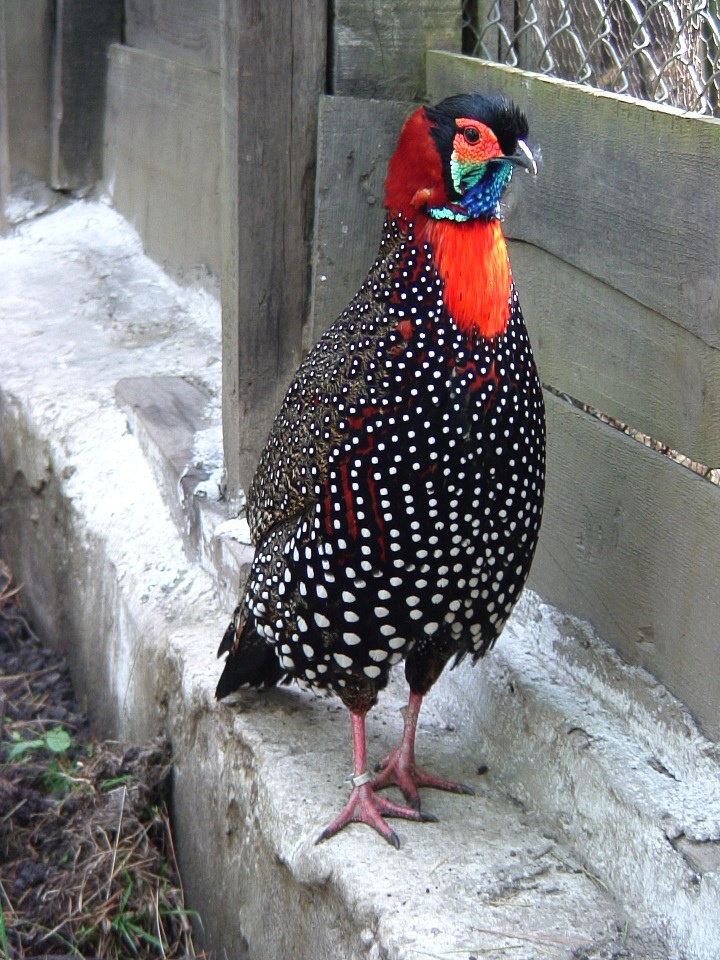
Responding to a question by Kuldeep Singh Pathania of congress, chief minister Prem Kumar Dhumal let the Vidhan Sabha know during question hour know that Central Zoo Authority (CZA) in 2003 approved a 10 year Rs 4.94 crore management plan for conservation breeding of Western Tragopan.
About plans of expanding the program, the chief minister further said that the government would consider extending the breeding program to Chamba and Great Himalayan National Park in Kullu, where the rare bird resides in natural habitats.
The information revealed that whereas CZA was to contribute Rs 3.65 crore, the state had a share of Rs 1.29 Cr in the breeding project but of the Rs 96.50 lakh released by CZA in 2003-04, 2005-06 and 2006-2007, only Rs 79.40 lakh had been spent till March, 2011.
Out of funds realized from catchments area treatment (CAT) plans for Baspa and NJPC hydropower projects, the government spent Rs 98.20 lakhs on the breeding program and an additional Rs 10 lakhs from the state plan for endangered species in 2008-09 and 2009-10.
Figuring in the Red Data Book of IUCN and endemic to Western Himalayan region, captive breeding of Western Tragopan was for the first time achieved at Sarhan in 1993 and the bird was declared as state bird in 2007.
Of the 6 chick bred in 2008, 2 had died and though the two chicks born in 2009 had survived but the one chick born in 2010 had died. Besides, due to e-coli infection among the captive population, the pheasantry also lost 3 adult females in 2010.
Presently there are 19 Tragopans (10 males, 9 females) at the Sarahan aviary, which also acts as a rehabilitation centre for the pheasants rescued from the wild, and has so far hosted 14 rescued birds since 1990.
The management plan provided for ex-site conservation breeding and John Corder, a representative of World Pheasant Association has been engaged as a consultant for the project.
The program plans to create 7 new enclosures of about 280 sq meters this year at a cost of Rs 1.33 crore but due to heavy snow recorded in December 2010 and January 2011, roofs of three enclosures which were under construction were damaged due to warping beams.
As Editor, Ravinder Makhaik leads the team of media professionals at Hill Post.
In a career spanning over two decades through all formats of journalism in Electronic, Print and Online Media, he brings with him enough experience to steer this platform. He lives in Shimla.




any project can never be successful where a govt department is involved for the simple reason officers have no interest but are involved for just being in the department,people involved are not ready to listen to sane advice and are going ahead thinking they know everything,it is waste of money and a rare species but then in a country like india anybody is free to anything he likes and there are no questions asked or no one is answerable,kaushlendra singh
Breeding season for the tragopans has started and we do have fertile eggs of the Cabot’s & Temminck’s tragopans. We expect the first eggs of Blyth’s and Satyr tragopan within a few days from now. It is hoped that the breeding project for the Western tragopans at Sarahan will see some youngsters this year. We wish them the very best. Francy Hermans
yes indeed,it’s a pity to see that people still don’t understand that the only tragopan expert in the world,that would be able to breed several hundreds of this magnificant and rare national bird lives in belgium and is still !!! not able to help this 17 year old project and all these beautiful birds that already died in between,even though he already had the solution for it before the whole money waisting project was even started.the solution is so simple,once you only simply listen to this man with his great free!! advices and help!but for people that like to keep some rumour mystery stories alive,this might be pleasant to read….
The programme for casual lover of nature may looks failure and frustrating one but I feel that patience is required for such like projects. Every experiment can not be guarntted to be successful but failure too should be taken positively for further success. Yes , of course, person to be deployed for job should be a person who have interest and knowledge on the subject.
My background is as a veterinary surgeon, wildlife rehabilitator and researcher into measuring stress in birds.
I was alerted to the fate of this wonderful bird by a colleague, who was shocked to hear that little effort was being taken to investigate the cause of such poor survival rates.
It is my opinion that surrogate mothers should be used as a minimum as it is highly likely the adult birds in captivity will be very stressed from disease and captivity. In this respect the stress in the laying hen could be contributing to elevated stress hormones in the eggs. It is therefore very important to get the captive environment as close to the natural one. As this is an arboreal species the cages must have suitable branches and foliage for the birds to roost in. Knowing the life history of a species is the first step towards mimicking it in captivity. What is known about the maternal/paternal care of this bird? Are any specific features of the conditions of egg incubation being considered? With regard to infections like E.coli and Salmonella sp. basic bio security and egg washing would be a step in the right direction.
I hope these comments are constructive and would be happy to give further advice on quantifying and reducing stress, which may be thwarting the reintroduction.